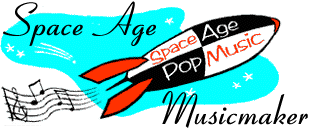Home · Listener's Guide · The Songs · Who's Who · Liner Notes · Selected Tracks · What's New · Search

Joe Bushkin
- Born 7 November 1916, New York City
- Died 3 November 2004, Santa Barbara, California
Bushkin was a musician's musician, highly regarded among his peers if not less known to the popular audience. After studying piano and trumpet as a kid, he began working professionally in New York Clubs at the age of 18.
A year or so later, he was hired by trumpeter and bandleader Bunny Berigan. The hard-drinking Berigan introduced Bushkin to the wild side of life, but Bushkin steered clear of the alcoholism that eventually wrecked Berigan's career. Berigan, who was always a better friend than businessman, introduced Bushkin to other musicians, landing him gigs with Billie Holiday, Artie Shaw, and Cozy Cole. Bushkin quit to join the combo of another legendary elbow-bender, Eddie Condon, in 1936, but he returned to Berigan's band and stayed there until Berigan was forced to break up the group.
In 1940, Tommy Dorsey hired him. For Dorsey, he worked as both musician and arranger/composer, which is how a lot of arrangers such as Ray Conniff and Nelson Riddle got started. While working for Dorsey, he composed a popular hit, "But Oh, Look At Me Now," which was covered by Frank Sinatra, among others. (Later, Bushkin liked to quip onstage, "...and now I'd like to do a medley of my hit").
Drafted during World War II, he was assigned to an Army Air Force band, where he directed musical revues and played the trumpet. While in the Army, he wrote the topical tune, "Hot Time in the Town of Berlin," which became a minor hit for both Sinatra and Bing Crosby. He worked for a while with David Rose's orchestra, then was hired by Benny Goodman in 1946 to replace Mel Powell. After Goodman broke up his big band to concentrate on small groups, Bushkin bounced around a bit, taking a touring job, playing with studio ensembles, working with Frank Sinatra, and even appearing in a Broadway production of Garson Kanin's play, "The Rat Race."
In 1950, he formed his own band and began working the Manhattan club circuit,settling into a regular spot at the Embers. At the Embers, he found his niche. He made regular broadcasts from the club, some of them for the Armed Forces Network, and his fame attracted a recording offer from Columbia. Whitney Balliett, The New Yorker’s jazz critic once wrote of Bushkin's club performances:
He sways back and forth, as if he were rowing in thick weather, sometimes leaning back so far he disappears. His small feet dance intricately and furiously beneath the piano, and he marks successful arpeggios by shooting his right foot into the air. He is tireless. When he is not rowing, he weaves from side to side, and every few minutes he turns his head to the rear so fast it appears it may go all the way around. No matter how long or how fast he plays (he cherishes uptempos), he keeps his music on an esctatic plane.
Capitol Records hired him to do a series of mood albums, featuring his piano backed by a lush string orchestra, a slightly jazzier version of Jackie Gleason's work. Bushkin had a hit with his very first Capitol record, his composition for piano with orchestra, "Midnight Rhapsody." Kenyon Hopkins provided the arrangements for Night Sounds and several other Bushkin Capitol LPs. The easy-listening flavor of most of the Capitol albums belies the true range and versatility of Bushkin's style, and in many ways, his two Columbia albums offer a better reflection of his lively yet graceful playing.
Bushkin moved into small group and studio work by the 1950s, recording as a featured soloist on occasion, but more often backing singers. He began performing in clubs in Hawaii in the 1960s, and eventually settled there for a time. In 1970, he moved back to California and set up a horse ranch outside Santa Barbara. He felt the hiatus had a positive effect on his playing: "When I haven't played for a while," he said, "my ideas are very fresh. If I'm playing every night -- well, even a train stops, you know."
Bing Crosby coaxed him out onto the road to be his accompanist and a featured performer on Crosby's last major tour in 1975, and the two performed in Europe and the Americas, wrapping up with a Christmas run on Broadway. The experience encouraged Bushkin to try performing on his own again, and appeared for a few nights at Michael's Pub in New York City over the next few years--once while his daughters were there to compete in the National Horse Show. He was a featured performer on Marian McPartland's "Piano Jazz" in 1991 but performed only intermittently after that. His last concert was in 2001.
Recordings
- I Love a Piano, Atlantic ALR-108
- Piano Moods, Columbia CL-6152
- After Hours, Columbia CL-6201
- Joe Bushkin, Royale 18118
- Joe Bushkin and his Rhythm (plus Teddy Wilson), Galaxy 8485
- Piano After Midnight, Epic LN-3345
- Midnight Rhapsody, Capitol T-711
- Skylight Rhapsody, Capitol T-759
- A Fellow Needs a Girl, Capitol T-832
- Bushkin Spotlights Berlin, Capitol T-911
- Night Sounds, Capitol T-983
- I Get a Kick Out of Porter, Capitol T-1030
- Blue Angels, Capitol T-1094
- Listen to the Quiet, Capitol ST 1165
- Night Sounds--San Francisco, Decca DL-74731
- Turns Doctor Doolittle On, Columbia CS 9615
- Joe Bushkin, In Concert Town Hall, Reprise RS-6119
- Play It Again, Joe, Atlantic 7 81621
- Road to Oslo/Play it Again Joe, DRG 8490
S p a c e A g e P o p M u s i c
Home · Listener's Guide · The Songs · Who's Who · Liner Notes · Selected Tracks · What's New · Search
Email: editor@spaceagepop.com